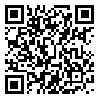Volume 15, Issue 4 (Winter 2012)
Physiol Pharmacol 2012, 15(4): 538-544 |
Back to browse issues page
Download citation:
BibTeX | RIS | EndNote | Medlars | ProCite | Reference Manager | RefWorks
Send citation to:



BibTeX | RIS | EndNote | Medlars | ProCite | Reference Manager | RefWorks
Send citation to:
Taherianfard M, Sajedianfard J, Geramizadeh B, Jafari N, Haghighatjoo G, Hoseinnia F. Effect of butylated hydroxytoluene on passive avoidance learning in male rats. Physiol Pharmacol 2012; 15 (4) :538-544
URL: http://ppj.phypha.ir/article-1-753-en.html
URL: http://ppj.phypha.ir/article-1-753-en.html
Mahnaz Taherianfard 
 , Javad Sajedianfard
, Javad Sajedianfard 
 , Bita Geramizadeh
, Bita Geramizadeh 
 , Neda Jafari
, Neda Jafari 
 , Gelareh Haghighatjoo
, Gelareh Haghighatjoo 
 , Farzaneh Hoseinnia
, Farzaneh Hoseinnia 


 , Javad Sajedianfard
, Javad Sajedianfard 
 , Bita Geramizadeh
, Bita Geramizadeh 
 , Neda Jafari
, Neda Jafari 
 , Gelareh Haghighatjoo
, Gelareh Haghighatjoo 
 , Farzaneh Hoseinnia
, Farzaneh Hoseinnia 

Abstract: (11668 Views)
Introduction: Butylated hydroxytoluene (BHT 2, 6-di-tert-butyl-p-cresol) is one of the extensively used
antioxidants in the food industry. It is used in low-fat foods, fish products, packaging materials, paraffin, and mineral
oils. BHT is also widely used in combination with other antioxidants such as BHA, propyl gallate, and citric acid for the
stabilization of oils and high-fat foods. On the other hand, some investigators have reported that BHT has psychotic
effects. Therefore, the aim of the present study was to investigate the effect of BHT on learning and memory in a model
of passive avoidance learning in male rats.
Methods: Twenty-eight male rats weighting 180-260 g were used. Animals were divided into 4 groups: 1- control
group (received sesame oil with the same volume as experimental groups) -2 experimental 1 (received BHT 25
mg/kg/day) 3- experimental 2 (received BHT 100 mg/kg/day) 4- experimental 3 (received BHT 150 mg/kg/day). BHT
was administered by oral intake for 15 days. Learning and memory were assessed by a passive avoidance shuttle-box.
Data were analyzed by one way ANOVA and Tucky's post-hoc test. The level of significant was set at P<0.05.
Results: Our data showed that BHT at the doses of 25, 100 and 150 mg/kg/day significantly decreased the time
spent in light compared to the control group.
Conclusion: According to our results, BHT impairs learning and memory in passive avoidance learning.
Type of Manuscript: Experimental research article |
Subject:
Others
| Rights and permissions | |
 |
This work is licensed under a Creative Commons Attribution-NonCommercial 4.0 International License. |



